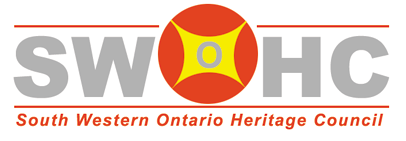EDWIN WILLIAM "BILL" DEAN
- Tried to enlist at 17 years of age, but was turned down because of a nasal problem (deviated septum due to a broken nose). He then proceeded to have an operation at his own expense to rectify this problem. On his second attempt he was successful in enlisting.
- Enlisted #1 Manning Depot, Toronto, April 21, 1943
- #1 SFTS (Service Flying Training School), Camp Borden, Ontario, June 1943
- ATU (Advanced Training Unit), Edenvale, Ontario, June 1943
- Western Tech, Toronto, Ontario, July 1943
- No. 6 Bombing & Gunnery School, Mountain View, Ontario, August & September 1943
- No. 9 Bombing & Gunnery School, Mont Joli, Quebec, September 17 - December 10, 1943
- No 1 “Y” Depot, Lachine, Quebec, January 16, 1944
- No. 4 AGTS (Aircrew Graduate Training School), Valleyfield, Quebec, January 19 - February 11, 1944
- Transported overseas on RMS Andes, March 4-14, 1944
- No. 3 RCAF PRC (Personnel Reception Center), Bournemouth, UK, March 15-22, 1944
- No. 28 OTU (Operational Training Unit) Wymeswold, Leics, March 29 - June 19, 1944
- “Crewed Up” April 14, Wellington Crew
- 1667 11 Base RAF Station, Boston Park Camp, Lindholme, June 19-30, 1944
- 1665 RAF Station, Sandloft, Yorkshire, June 30 - July 10, 1944
- 1662 RAF Station, Blyton, Lincolnshire, July 10 - August 11, 1944
- 1481 RAF Station, Ingham, Lincolnshire, August 11 - 21, 1944
- LFS (Lancaster Finishing School), Hernswell, Lincolnshire, August 21 - 31, 1944
- Posted to RAF Bomber Command, 101 Squadron, Ludford Magna, Lincolnshire, August 31, 1944
- Flew 32 Combat Missions - September 12 - December 15, 1944
The 101 Squadron flew top-secret missions with extra radio hardware and an extra crew member. The eighth man (Special Duties Operator) who was fluent in German, intercepted radio signals from enemy fighter bases that would direct enemy planes into the paths of Allied bombers. The eighth man, speaking in German, would direct the enemy fighters in the wrong direction. This was one of the first applications of on-board electronic counter-measures in aviation history, which accounted for it’s Top Secret status. The added weight of the extra crew member and radio equipment was offset by a reduced bomb load and, strangely enough, reduced ammunition supplied to the gunners. German aircraft were able to home-in on the Special Duties’ radio transmissions and resulted in the 101 Squadron having the highest loss rates during the war.
F/S Dean was credited with a “damaged” and “probably” enemy aircraft victory (JU 88’s) on night mission to Aschaffenburg, Germany on November 21, 1944.
From F/S Dean’s Flying Log Book, the following aircraft and flying hours were recorded:
Fairey Battle 17:30
Wellington iii x 80:20
Halifax ii v 28:15
Lancaster i iii 191:20
Grand Total !!! 317.25 hours
- Transported back to Canada on the Queen Mary, February 5 - 11, 1945
- R. Depot, Lachine, Quebec, February 12, 1945
- #16 SFTS (Service Flying Training School), Hagersville, Ontario, April 12 - 17, 1945
- #4 RC Toronto, Ontario, April 15, 1945
- Discharged May 2, 1945 submitted by James Dean






